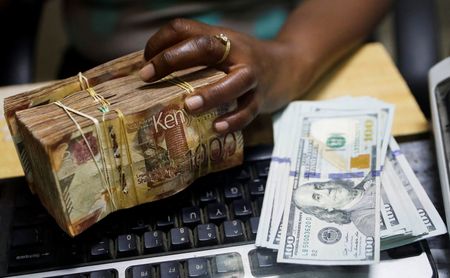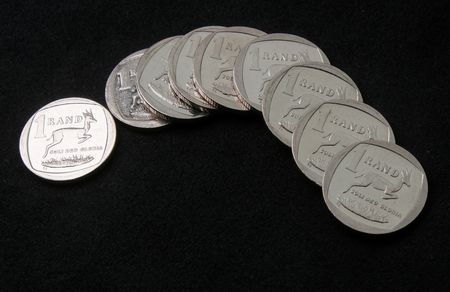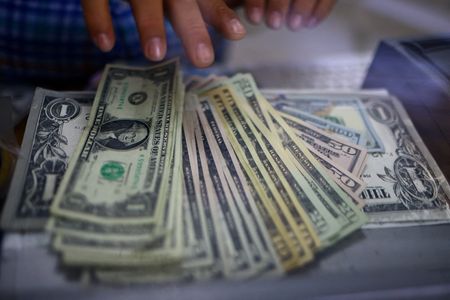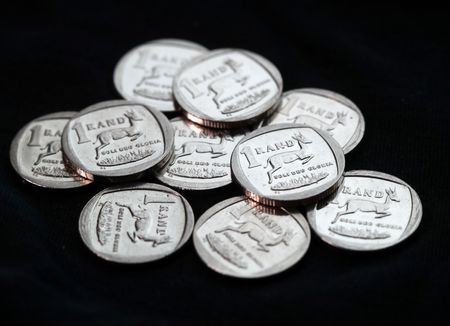By Kevin Buckland and Rae Wee
TOKYO (Reuters) -The dollar strengthened broadly on Tuesday after U.S. tariffs on Chinese goods came into effect, triggering swift retaliation from Beijing and prompting a selloff in the Chinese yuan and the Australian dollar.
The Canadian dollar and Mexican peso also weakened despite earlier winning a reprieve on their own U.S. tariffs. The euro declined, with the European Union also finding itself in Washington’s trade crosshairs.
U.S. President Donald Trump’s administration slapped additional 10% tariffs on imports from China from 12:01 a.m. ET on Tuesday (0501 GMT).
Beijing responded with tariffs to take effect Feb. 10 on things such as American cars, farm equipment and energy shipments.
That reignited worries about a widening and possibly protracted global trade war, which had receded somewhat overnight following Trump’s last-minute deals with Ottawa and Mexico City.
“Unlike Canada and Mexico, it is clearly harder for the U.S. and China to agree on what Trump demands economically and politically,” said Gary Ng, senior economist at Natixis.
“The previous market optimism on a quick deal still looks uncertain. Even if the two countries can agree on some issues, it is possible to see tariffs being used as a recurrent tool, which can be a key source of market volatility this year.”
The Chinese yuan edged down about 0.3% to 7.3213 per dollar in offshore trading, although that was well back from the record trough reached overnight at 7.3765 yuan. There is no official yuan trading until Wednesday, with mainland markets still closed for the week-long Lunar New Year holidays.
The Aussie, which often acts as a liquid proxy for the yuan, sank 0.7% to $0.6186, but that was well above Monday’s low of $0.60886, the weakest level in nearly five months.
Those currencies, along with Canada’s loonie, Mexico’s peso and the euro, had rebounded sharply overnight after both Canadian Prime Minister Justin Trudeau and Mexican President Claudia Sheinbaum said they had agreed to bolster border enforcement efforts in response to Trump’s demand to crack down on immigration and drug smuggling, leading to a 30-day reprieve on 25% tariffs.
The loonie lost 0.4% to C$1.4485 against its U.S. counterpart on Tuesday, following a sharp rebound from a low of C$1.4792 on Monday, the weakest level since 2003.
The peso was about 0.4% lower at 20.4100 per dollar, but well above the previous session’s nearly three-year trough at 21.1882.
“Risk sentiment improved markedly following the late-day announcement, but we’d caution that trade concerns could start to weigh on markets again if there are no tangible signs of progress on a lasting deal by the end of the month,” TD Securities analysts wrote in a note.
“Our tracking of trading uncertainty is rising, not falling, suggesting markets will continue to price in a risk premium in FX associated with this theme of disruption.”
TD expects “USDCAD dips will be brief and shallow”, and the currency pair will rise to C$1.50 by end-March, based on Canada’s “relatively weak macro story”, as well as trade uncertainty.
The euro slid 0.4% to $1.0297, after recovering from the lowest since November 2022 at $1.0125 on Monday.
Sterling declined 0.4% to $1.24047, despite Trump’s suggestion that Britain might be spared tariffs.
The U.S. dollar gained 0.3% to 155.24 yen.
(Reporting by Kevin Buckland; Editing by Sonali Paul and Kim Coghill)










